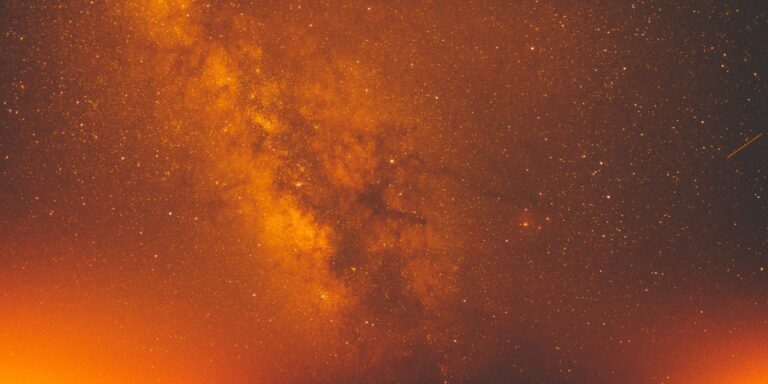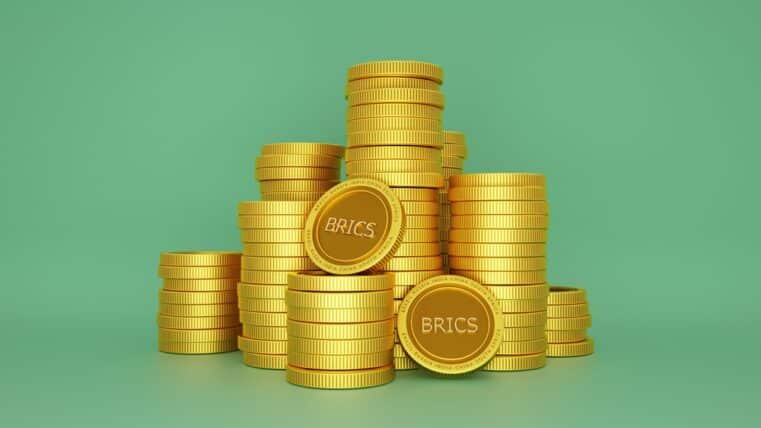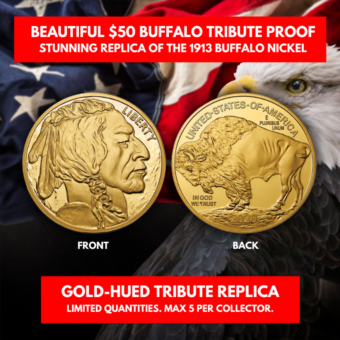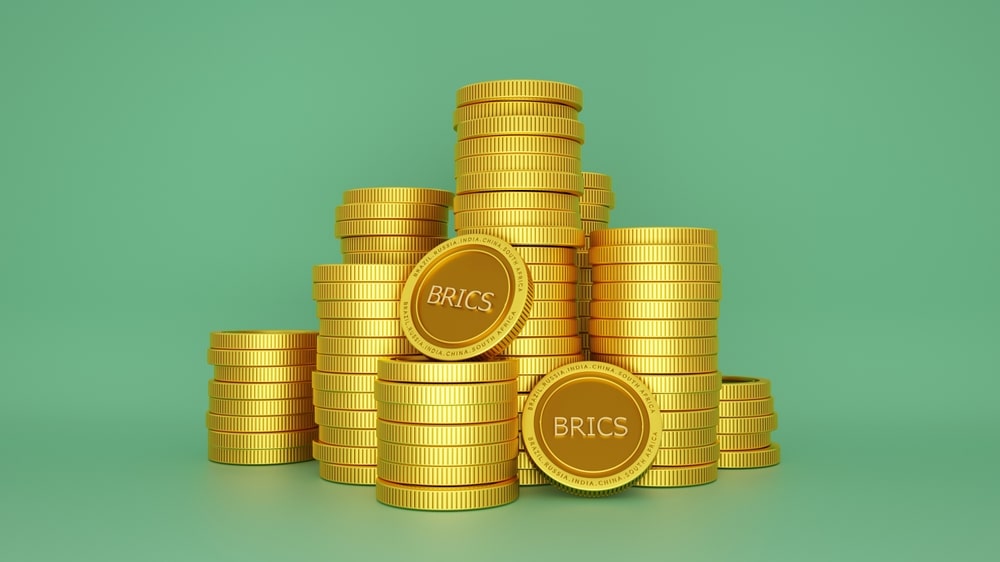
How is Gold Formed in Nature?
Gold is more amazing than you think. Sure, it is a highly valued and beautiful precious metal that has graced the halls of emperors and the hands of queens but, it’s origin story is the truly spectacular part. Most of us understand that gold is mined from deposits in the Earth’s crust, but how did it get there? For much of human history gold, along with other precious metals, was an alluring mystery.
Ancient cultures, like the Egyptians, revered the metal, alchemists tried to create it from other base substances, and modern scientists continue to explore it’s properties and applications to modern technologies. Gold is abundant enough to be found in the crust of the Earth and sometimes even on the surface. Yet, gold isn’t actually formed on Earth. Actually, gold isn’t even formed in our own solar system.
What is Gold?
To understand how gold is formed in nature and appreciate where it actually comes from it is important to know exactly what gold is. At the most basic level, gold is a chemical element of high malleability with the symbol Au, from the Latin for gold, aurum. It has a relatively high atomic number of 79 on the periodic table. Because it is an element on the periodic table this means that if you took a pure gold nugget and cut it in half, again and again, all the way down to the level of a single atom, you would still have gold.
To make gold you would first need 79 positively charged protons, 79 negatively charged electrons, and 118 neutrally charged neutrons. Then, with more energy than even our own sun contains, you would stick all of those pieces together to form one gold atom. Next, you would need over 30 billion of those gold atoms stuck together to get a one gram gold nugget. Now, compare that to the fact that, on Earth, we have mined over an estimated 171,000 tonnes of Gold. That is a lot of gold and a mind-boggling high number of gold atoms.

Gold has long been thought to have been produced in supernova nucleosynthesis and from the collision of neutron stars.
The Origins of Gold
One of the strangest facts that we know about gold is that not a single atom of gold was created in our solar system, let alone on Earth. Future scientists might disprove this but, so far, our best science tells us that a single atom of gold needs to be formed with huge amounts of heat, pressure, and energy. The levels required to do this are higher than anything found in our own solar system, including our own sun.
Stars, of which our sun is one, are where the universe creates most basic elements of the periodic table. Our sun, for example, creates helium and hydrogen. All stars do this actually. Stars are super hot, super dense sites for what is called nuclear fusion and through this process, the simplest of all elements, hydrogen, is formed into helium. From there helium is used to make other slightly heavier elements. Carbon, nitrogen, and oxygen eventually enter the picture. Still, this remarkable process churning away in all the stars you see in the night sky doesn’t make gold.
Compared to elements like hydrogen (atomic number 1) and carbon (atomic number 6), gold (atomic number 79) is very heavy. You see, the atomic number of an element roughly tells you how big that element is. The nuclear fusion that takes place in stars can make many of the major elements needed for life but as atomic weights rise even the great power of a churning star isn’t enough to produce the atom. You need something even bigger and more powerful.
The Death of a Star
A massive burning star is born into existence and begins the complex chemical work of nuclear fusion bringing hydrogen, helium, carbon, oxygen, and many other elements into the universe. This creation comes at a cost though and the star slowly begins to burn up its fuel as it expends tremendous amounts of energy making each element. The created elements keep getting heavier, the energy cost rises, and then, silicon is made and burnt to create iron. That marks the final moments for a star as energies shift wildly and the star becomes unstable.
In the process of creating iron and other heavy elements, a star will eventually reach a point of critical failure, implode on itself, and then violently explode into space in what is known as a supernova. This is the death of the star. Its light will continue to travel through space and even reach planet Earth, and your eyes, for millions and billions of years after it is gone. Still, the star itself has died. Out of the chaotic and tremendous final moments of the star we are left with something new. Heavy elements, such as iron, are forced together.
Gold is born. This is one of the most amazing facts about gold and our universe. It is only in the explosive destruction of an ancient and distant star that gold was made. Whenever you touch gold you are directly touching the atoms that were made from a dying neutron star billions of years ago and many lightyears away from Earth. The incredible truths about gold don’t stop there though.
Gold’s Journey to Earth
In the immediate aftermath of a supernova, heavier elements like gold and uranium are formed and then flung out into the void of space. They are sent on a journey into infinity which, only under very specific conditions, led some to Earth’s surface. To put this all in perspective consider this, the nearest star to our sun is called Proxima Centauri and it is 4.22 light-years away. Each light-year is about 5.88 trillion miles so, for clarity sake, the nearest star to ours is around 18 trillion miles away.
If this nearest star, Proxima Centauri, went supernova, besides causing terrible damage on Earth, it would take more than 5 years (probably much more) and around 18 trillion miles for any gold created to reach us. That’s assuming that an appreciable amount was flung in our direction, doesn’t collide with any other space debris, isn’t thrown off course by the gravity of another large object, and is perfectly on course for planet Earth. That’s a lot of assumptions.
In reality, the gold we now have on Earth arrived billions of years ago and probably came from even more distant sources. That is even more spectacular. The estimated 171,000 tonnes of gold mined on planet Earth today made the treacherous and long journey through space and collided with the planet. Someone has probably done the math but the chances of that happening at all seem slim.
Although Earth is large to us it is a small target for an asteroid carrying elemental gold from many light-years away. If you left our solar system and attempted to shoot something at Earth, with even a fair degree of accuracy, you’d still be more likely to hit the Sun or Jupiter. This is one of the reasons that the availability of gold is so remarkable and why it is relatively rare. It had to travel inconceivable distances through space and land with tremendous serendipity on this planet.
Dead on Arrival
It is an understatement to say that we are lucky to have available and minable gold on our planet. There is an alternate history that could have easily occurred that would have left us without gold. Imagine, a supernova flings a huge deposit of gold right at us. The course is perfect and the gold travels for dozens of light-years uninterrupted. It enters our solar system as an asteroid, breezes past the sun and other planets, and makes its way to Earth as if it was programmed to do so.
The asteroid, laden with gold and other precious elements, slams into the young Earth and sends meteorites flying thousands of miles in all directions. But then, slowly, the fragments of the asteroid begin to crumble, fall apart and flow into the molten surface. You see, this asteroid arrived before the young Earth’s core had fully formed. The asteroid, and all the precious metals it brought with it, sink to the center of the Earth, far out of reach of future 21st-century humans.
In fact, this is exactly what happened during Earth’s early years and it is estimated that there are enough precious metals in the core of the Earth to cover the entire surface of the planet in a four-meter thick layer. Still, lucky for us, the early asteroid bombardments brought enough iron with them to slowly create a solid planetary core. As the core thickened, future asteroid strikes began to contribute to the formation of the planet’s upper layers and, ultimately, left gold in the upper crust where we can reach it.
Now, you may have noticed that massive asteroid strikes and rains of space debris don’t happen much these days. Early Earth was much different and much more susceptible to impacts from far-flung space items. This also means that early Earth was much more open to receiving deposits of the gold and other heavy elements we see now. Modern Earth is protected by its atmosphere, the sun, and even a belt of asteroids on the outer reaches of the solar system.
If gold hadn’t continued to arrive on early Earth after the core thickened, or if gold arrived too late in Earth’s and the solar system’s development then this article and the entire gold market would not exist. It is far too easy to imagine alternate histories of an Earth without gold once you consider how many things had to go right for gold to be within reach. Not only did phenomena in space align perfectly for gold to reach our planet but then our planet’s own geology functions in such a way that makes gold accessible, even to this day.
Geological Access
The gold that reached early Earth was spread from the core to the crust and geological actions over time have circulated this gold. Throughout human history, we have slowly picked away at successive layers of gold going deeper and deeper in pursuit of more. While some gold has been found on or near the surface much of it remains deeper in the Earth. The four primary types of gold deposits to be found are known as lode, intrusive, placer, and laterite.
Lode deposits occur when the Earth’s tectonic plates collide and deep magma is pushed upward towards the surface. This magma eventually cools to create metamorphic rock. This rock naturally forms fault lines through which hot fluids at very high temperatures try to escape to the surface. As that fluid pushes from below it carries molten gold with it. Over time the liquid and the gold cool in these cracks creating gold veins in the Earth’s mantle.
Intrusive gold is very similar yet this occurs when magma penetrates solid rock walls and carries gold with it. The magma eventually cools and leaves pockets of gold in the rock. The lode and intrusive gold deposits then contribute to placer deposits. Flowing water slowly erodes the deposits formed by magma and carry gold and minerals downhill into rivers and lakes. As the water sources dry the deposits remain. This is what sometimes led to the gold flakes found in river beds during the gold rush.
The final source, laterite, occurs with preexisting gold deposits. Laterite is technically a soil and rock that is rich in iron and aluminum. Gold in weathered bedrock combines with iron oxide and creates these deposits. It is the processes like these that have made gold accessible to us. Earth’s geology allows for magma to push towards the surface and carry deep deposits with it. Water can erode rock and transport gold and minerals with it. These are facts we take for granted but without these occurrences, gold could have easily been lost to the core of the Earth.

Most of the gold we have today comes from gold mines like the one pictured here.
Gold on Earth
Because gold is spread throughout the Earth, from the core to the crust, it is challenging to get an accurate measurement of how much there really is. Some estimates say that all the gold ever mined so far amounts to around 171,000 tonnes while others cite numbers higher and lower. This isn’t as much as you might think. All this gold could probably fit in around 80 tractor-trailers. The exact amount of gold still in the crust and deeper in the core of the Earth is hard to determine with much precision too.
Veins of gold and gold deposits are becoming harder to come by. One of the largest sources of gold so far has been the Witwatersrand Basin of South Africa which has produced over 1.5 billion troy ounces of gold since its discovery in 1886. That is roughly half of all the gold ever mined. Since the 1970’s this source has been slowly drying up.
There are major deposits of gold all over the globe though. From the cavernous depths of the Mponeng mine in China to the mines of the Carlin Unconformity in Nevada, United States, and the mines of Australia. For the time being these gold sources, and others like them, are still reliable sources for gold. But, the day may come, when we have mined all the gold we can reach. Some predictions state that as early as the late 21st century we might deplete all the natural gold reserves that can be affordably accessed.
As that day approaches the relative value of gold is likely to increase and we, as a species, will be faced with some important questions. Should we search deeper in the Earth for more gold, should we learn to efficiently utilize the gold we have, or should we look to space for more? Each of these options carries with it tremendous pros and cons. Any further exploration for gold, whether on Earth or in space, will be very expensive. Continuing to use the gold supply we have may lead to dwindling personal reserves. There are no easy answers.
Final Verdict:
As remarkable as it may sound, plans are already underway to send a mission into space to mine for precious metals like gold. In some ways, this is poetic and perfect. Gold came to us from space and, in the spirit of human endeavor, we will eventually travel into space to get gold. The sheer value of gold and other precious metals in space is mind-blowing.
For example, there is one massive asteroid, located between Mars and Jupiter called 16 Psyche. A single mission to 16 Psyche would uncover a wealth of gold, iron, nickel, and other metals. It is actually estimated that this single asteroid contains around $700 quintillion worth of resources. To break that down, if the entire asteroid was mined and turned into cash on the spot every human on earth could get around $90 billion. Needless to say, a bounty of wealth came to Earth from space and limitless wealth still remains to be found in space.
Of course, it remains to be seen if mining an asteroid could ultimately do more harm than good. Destabilizing the gravitational pull of an asteroid belt could very well send a massive asteroid tumbling towards Earth. Whether we dive deeper into the oceans, repurpose our gold bullion and jewelry, or take that leap into space, gold will continue to be an integral part of humanity. The next time you have a piece of gold in your hands take a moment to appreciate the journey it has been on. From the birth and violent death of a star going supernova, through light-years of empty space, to the dark molten depths of the Earth and ultimately to your hands, gold is truly spectacular.











